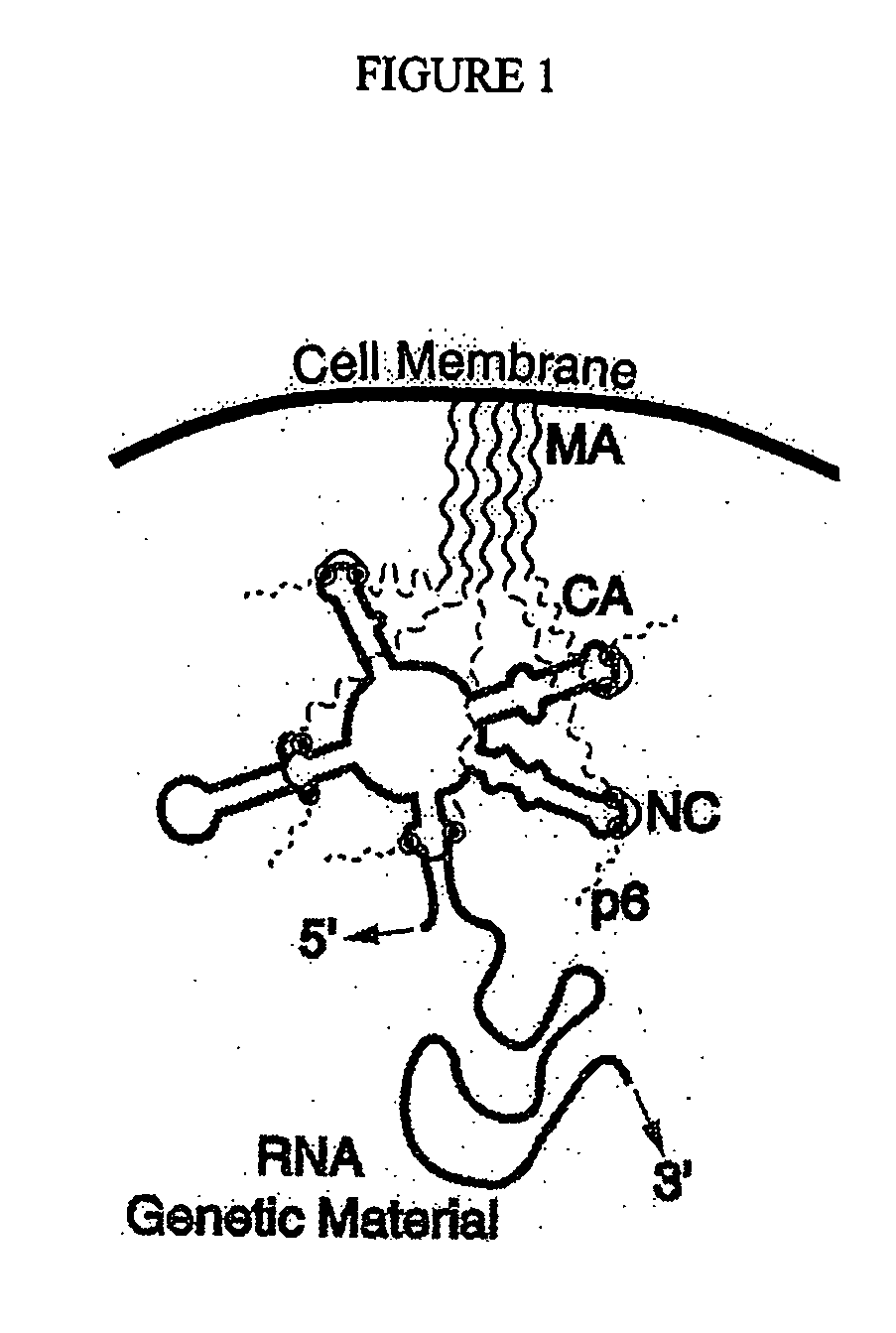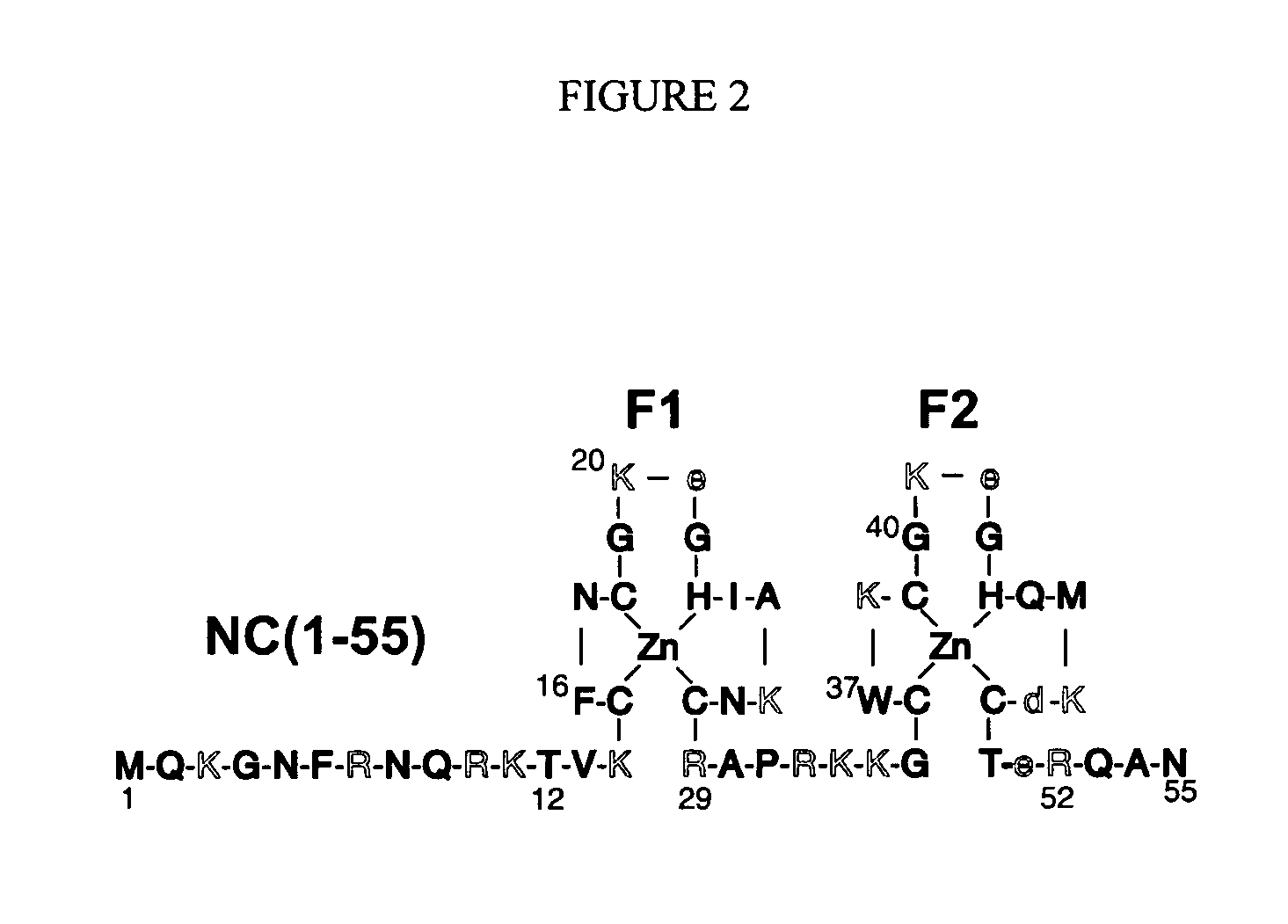Branched and multi-chain nucleic acid switches for sensing and screening
a multi-chain, nucleic acid technology, applied in the field of nucleic acid constructs, can solve the problems of large suffering and death, out of control worldwide epidemic, and millions of deaths worldwid
- Summary
- Abstract
- Description
- Claims
- Application Information
AI Technical Summary
Benefits of technology
Problems solved by technology
Method used
Image
Examples
example 1
Affinities of RNA Loops for NCp7
[0126] In spite of progress in defining the packaging signal, we have characterized the stoichiometry and affinity of NC proteins for the RNA stem-loops only recently (Shubsda, M. F. et al. (2002) Biochemistry 41:5276-82). Part of the problem was that most early studies neglected the salt dependence of the interaction between the highly charged components (NCp7 has a charge of +9 at neutral pH, and RNA has one negative charge per phosphate). Using an ionic strength of 0.2 M reduced non-specific binding and led to full quenching of Trp-37 fluorescence, a 1:1 stoichiometry for each of the component stem-loops in the major packaging domain (Shubsda, M. F. et al. (2002) Biochemistry 41:5276-82; FIG. 3), and gave results consistent with NMR-based structures of SL3 and SL2 complexes (DeGuzman, R. et al. (1998) Science 279:384-388; Amarasinghe, G. K. et al. (2000) J. Mol. Biol. 299:145-156; Amarasinghe, G. K. et al. (2000) J. Mol. Biol. 301:491-511). We fo...
example 2
Unimolecular Biostable Nucleic Acid Switch
[0140] The principles of the unimolecular bistable OrthoSwitches are illustrated in FIG. 6 and SEQ ID NO: 7. The DNA part of the sequence (shown in red) was designed to make the “H” state be more stable than the two-headed “O” state. The high affinity NC-binding sequence, GUG, is located in an RNA tetraloop in the O-form. The DNA sequence was engineered to set the equilibrium constant, K1, between 0.01 to 0.1 and, as shown below, it is 0.08. This simply means that the ratio of concentrations, [O] / [H]=0.08. A fluorophore is placed at the 5′-end of the chain (*), and a quencher at the location marked Q. The distance between fluorophore and quencher is much larger in H than in 0, so H has much stronger fluorescence. Such “molecular beacons” operate on the principle of FRET. The efficiency of transfer increases as the inverse sixth quencher. Thus a small change in distance between the dyes can lead to a large change in fluorescence.
[0141] The...
example 3
Screening For NC Inhibitors
[0143] The NC / switch complex is capable of identifying a high affinity inhibitor of NC by generating an optical signal. This requires the protein bound “dark” switch to dissociate in the presence of a high affinity NC inhibitor, producing an unbound “bright” switch.
[0144] In this experiment, SL2 from the HIV-1 packaging domain was used. It has a high affinity for NC (Kd=25 nM) and is not predicted to bind to any part of the switch at the concentrations used. SL2 also has GUG in the loop, similar to the O-form of the NC-Switch, but has a very different stem sequence.
[0145]FIG. 9 illustrates the results. The first bar shows the fluorescence intensity of the labeled C3 switch. The second bar shows the intensity after adding enough NC to switch a considerable fraction to the dark O-form. Addition of an amount of the SL2 inhibitor equal to the NC added produced a nearly instant response from C3 that is released from the P·O complex. The intensity increases ...
PUM
| Property | Measurement | Unit |
|---|---|---|
| Time | aaaaa | aaaaa |
| Photosensitivity | aaaaa | aaaaa |
| Luminescence | aaaaa | aaaaa |
Abstract
Description
Claims
Application Information
 Login to View More
Login to View More - R&D
- Intellectual Property
- Life Sciences
- Materials
- Tech Scout
- Unparalleled Data Quality
- Higher Quality Content
- 60% Fewer Hallucinations
Browse by: Latest US Patents, China's latest patents, Technical Efficacy Thesaurus, Application Domain, Technology Topic, Popular Technical Reports.
© 2025 PatSnap. All rights reserved.Legal|Privacy policy|Modern Slavery Act Transparency Statement|Sitemap|About US| Contact US: help@patsnap.com



